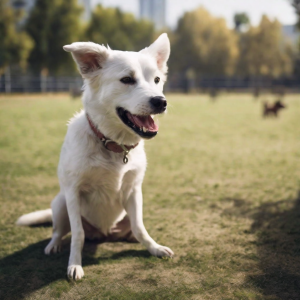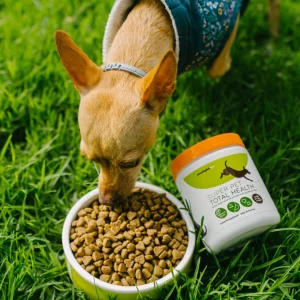The Best Dog park near me. Everything You Need to Know 2024. Looking for a fun way to get your pup some exercise and socialization? Dog parks are a great option for allowing your furry friend to run free and make some new doggy pals. However, visiting a dog park can also come with some uncertainties if you’ve never been before. This comprehensive guide will cover everything you need to know to make the most of your local dog park.
Finding the Perfect Dog Park
Dog park near me in USA
The first step is finding a dog park close to your home. While an unfamiliar park further away may seem like an adventure, starting with somewhere convenient will make visiting much more likely to become a regular habit. Research options in your city or neighborhood using online maps and reviews to scope out facilities, size, and amenities. Consider factors like:
Fenced, enclosed areas separate small and large dogs for safety
Shade coverage and water access for hot days
Benches and amenities for observant human friends
Clean, well maintained grounds free of excessive waste or hazards
Separate areas for active play vs more sedate socializing
Call or check websites for local parks departments or organizations to inquire about rules, hours, permits if needed, and any other details. Once you’ve scoped out a few promising options, start with the most favorable and convenient to ease into the routine. Establishing a solid local “home base” will lay the groundwork for many happy play sessions.
Dog Park Etiquette
Preparing for Your First Visit – Dog park near me in USA
Going to the dog park for the first time as a new visitor? Some basic etiquette will help your pup (and you) settle in smoothly:
Arrive on-leash and wait for an appropriate break to unleash in the designated area. This avoids overstimulating already playing dogs.
Watch your dog’s behavior and be ready to leash up if they show signs of over-play, guarding toys/food, or not responding to your commands.
Always supervise interactions – don’t assume all dogs are friendly. Be ready to call your dog away or remove them from situations that appear stressful or aggressive.
Bring essential items like plenty of water, clean-up bags, and treats to reward calm behavior. Consider a portable water bowl as well.
Give other park users space – most dogs do best with some personal bubble room when playing. Avoid crowding other people or animals unless invited.
Clean up any waste your dog leaves behind – no one wants to step in surprises! Carry bags and dispose of waste properly in park receptacles.
Being aware of basic etiquette will ease first-time jitters and help establish your dog as a respectful park citizen from the start. Consistency in these habits will make future visits much more enjoyable for all.
Socialization is Key Benefits of the Dog Park
A key reason dog owners love the local dog park is the unmatched opportunity it provides for canine socialization. Allowing your furry friend safe, positive interactions with other dogs and people brings a wealth of behavioral and mental benefits. With guidance and supervision, regular visits can help dogs:
Develop confidence being off-leash in open spaces
Learn acceptable greeting, play, and separation behaviors
Release energy through active group play sessions
Get comfortable with stimuli like various sizes/breeds of dogs
Improve leash reactivity issues through positive social modeling
Reduce separation anxiety by spending time with other “pack members”
Strengthen bonding with their human through fun reward-based training
Keeping mental and physical stimulation in balance helps reduce problem behaviors at home too. The social, exploring experience of the dog park offers challenges and opportunities missing from daily routine. This well-rounded lifestyle results in well-adjusted, happy companions.
Common Concerns Addressed
Potential Issues to Look Out For
As wonderful as the benefits are, dog parks do require some preparation and caution to stay safe. Here are a few potential issues to be aware of and address proactively:
Dog Aggression
Dog Park Aggression
While many dogs play perfectly well, underlying reactivity may emerge in overstimulating group contexts that owners aren’t aware of. Tension can escalate between dominant dogs fighting for toys/space. Monitor interactions closely and be ready/able to immediately leash and remove your dog from situations that appear troublesome.
Infectious Disease Risk
Disease Risks
Just like doggy daycare, exposing your pup to many other dogs means increased potential for transmitting illnesses. Be vigilant for any symptoms and keep vaccination records updated. Consider limiting contact if disease outbreaks occur locally per veterinarian guidance.
Park Hazards
From uneven pavement to sticks/glass/other hazards left in the park by careless visitors, injuries are always a possibility. Do regular visual checks of surfaces your dog will interact with and remove any questionable items when safe. Teach solid “leave it” commands as insurance.
Distractions and Training
Distractions
With so many exciting sights, smells and playmates available, focus tends to wander from highly distractible dogs. Practice obedience skills and impulse control training proactively using the park environment itself as rewards-based practice sessions.
Handling any emerging issues promptly with understanding and positive methods will keep experiences positive overall. With care, the incredible benefits outweigh occasional challenges for most well-adjusted canine companions.
Planning Your Park Visits
First Sessions at the Dog Park – Dog park near me
Whether your pup is an energetic youngster or more mellow adult, ease into visits at a relaxed pace. Plan shorter introductory sessions rather than feeling pressured to overdo it right away. Here are some tips to make those first trips a success:
Keep first visits short, like 15-30 minutes max, to avoid burnout. Gradually increase from there based on your dog’s energy and reactions.
Choose low-population periods to avoid overstimulation, like weekday mornings or evenings versus peak weekend afternoons.
Have friends shadow you as observers so one person can watch the dog and one emergency contact if needed.
Pack tasty training treats and use them generously to reward calm behavior like sitting when other dogs approach.
Leave leashes and toys at home until you understand how your dog interacts to remove triggers.
Know when it’s time to call it quits if panting, circling or obsessive wandering behaviors emerge.
With consistency and patience, your pup will gain valuable positive experiences. Slow and steady integration provides success every step. Have fun but remember it’s okay to take things nice and easy too!
FAQs about Dog Parks
Is my dog ready for the dog park? Dog park near me in USA
Watch for signs of strong reactions like lunging, barking or fearfulness on walks when other dogs are present. Training basic obedience commands like “sit,” “come,” “leave it” is key. Puppies usually need all shots plus some basic manners first. Follow your vet’s guidance based on temperament and concerns.
What items should I bring?
Essentials include plenty of fresh water, bowls, clean up bags, treats and a first aid kit. Optional items add convenience like portable seating, toys, sunscreen and a collar and leash that won’t easily slip off. Prepare to go hands-free in case you need to grab your pup quickly.
How do I choose between small and large dog areas?
Size isn’t the only factor – match temperament too. Watch for signs of stress, like cowering or nipping, if a larger dog enters the small area. Energy level matters as well, so consider breeds and age. Evaluate options based on your dog’s personality and what others in the area are like.
Should I bring food to the dog park?
No, avoid doing so. Food can create territorial issues, attract uninvited guests like birds, distract from playtime and tempt theft. It’s best to keep the park experience focused on exercise and fun only. Save treats solely for positive reinforcement training interactions.

My dog was attacked at the park. Now what?
Reactions can vary, so address trauma slowly and sensitively with care. Consider behaviorist guidance if symptoms like reactivity persist. For now, avoid that park and seek calmer environments. Positive counter-conditioning Sessions coupled with play therapy can help rebuild confidence gradually at a new park with well-vetted dogs. Patience and compassion will guide recovery.
In conclusion, dog parks offer an incredible opportunity for furry friends to enjoy safe off-leash exercise and socialization when used wisely. With some preparation covering park etiquette, your dog’s temperament and needs, and response planning for potential issues, most well-adjusted canine companions thrive on the mental stimulation and adventures of regular visits. Start slow, pay attention, and focus on the bonding joy of making new park buddies together. Happy trails to you and your pup!









